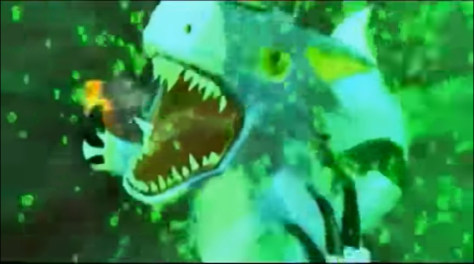
This and the next entry on this site have been chosen for a specific personal reason: I actually wrote about them on another website six years ago (almost to the day), but looking back, I really don’t like the approach I took. I was still all about the Internet smart-assery back then, trying way too hard to be funny, and it’s just not particularly interesting to read now—so, I want to give some of that subject matter its proper due. Not that these things are necessarily lost gems unworthy of some light mockery—they are, after all, film spin-offs of popular Japanese media franchises—but there could still be some material worth digging into.
Case in point: Digital Monster X-Evolution (yes, that means it’s Digimon, but I’ll refer to it by its original Japanese title for clarity), a TV movie that aired in Japan in 2005 as part of a new merchandising push for the series by Bandai (the version I watched even included spots trumpeting the sponsorship and toy/video game tie-ins), which sounds especially cynical and only makes the actual product even stranger in context. Completely unrelated to the previous Digimon anime series, it’s the only entry that foregoes any human characters, and instead is entirely about the Digimon themselves and their lives within their computer data world—this is the rare monster story that is all monsters, all the time. It’s also the only Digimon TV/movie production that is animated in CG—which is interesting considering that it’s always had that computer connection—provided by Imagi Studios, the Hong Kong-based company that would later go on to make feature films based on Teenage Mutant Ninja Turtles and Astro Boy, and then not make a feature film based on going bankrupt because they were too busy going bankrupt. A TV-budget CG film seems like an iffy proposition, and you wouldn’t be wrong to think so, what with the lifeless-looking backgrounds (with the odd splashes of 0s and 1s floating around) and scenes with lower frame rates. But X-Evolution is so peculiar in general that it’s really easy to overlook that.

For a seventy-seven minute toy commercial, this is an unrelentingly dour movie, way beyond the other Digimon animated series, and even beyond the other bewilderingly dark toy movie adaptations people usually harp on like Transformers: The Movie. This opens with the basic story premise: sometime prior to the events of the film, the program that runs the world of the Digimon, called Yggdrasil (after the world tree in Norse mythology), determined that the Digimon population had grown beyond sustainable capacity, and so decided to eliminate all but a handful of them and then transfer them to a new server. Yes, we start with the Digimon equivalent of God causing a mass extinction event, which is very Old Testament with a Malthusian twist. Some monsters beyond the chosen survivors lived on because they developed something called an X-Antibody, which changes their appearance (this whole exercise was done entirely to justify making new versions of old monsters)—and now Yggdrasil is sending its loyal minions, called the Royal Knights, to get rid of them. Now, that’s a lot of important backstory, but the movie itself does not always make that stuff clear—they throw around terms like X-Antibody and Project Ark without properly explaining them, and so some of these details comes not from having watched the movie, but from additional research. It seems like the producers may have assumed that most of the audience must have known the backstory already from the accompanying merchandise, just to remind you that yes, this is a toy commercial with a story about mass death. You know, for kids
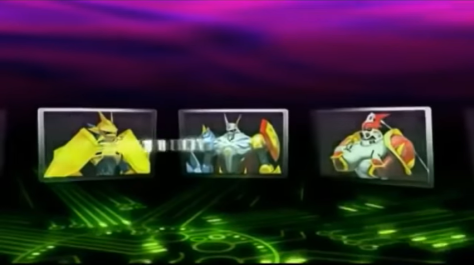
The central protagonist of this farrago is a fuzzy purple dinosaur named Dorumon, who we first see being chased in the rain by the murderous lion-man Digimon Leomon, who dies before he can stab Dorumon to death with his sword. In his dying words, he introduces the recurring ideas of the story, telling Dorumon to “live for me” and “carry on for our future”—Dorumon responds to seeing a someone die right in front of him by shouting to the sky, the first of a few times that exact thing happens. Our cute-looking protagonist is constantly stalked not only by the spectre of death (there are multiple sweeping shots of fields full of dead bodies), but also a feeling of estrangement from his surroundings—he and other Digimon with the X-Antibody are ostracized by “normal” Digimon because they think their very existence is bringing the hammer down on all of them, and Dorumon spends much of the movie having an existential crisis, asking what he is and why he exists. Again, for kids.
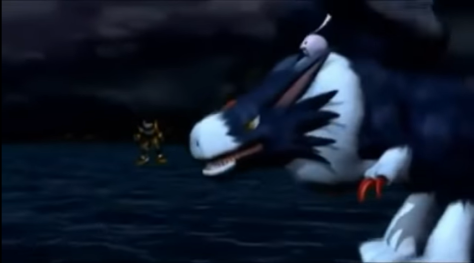
Meanwhile, a small group of X-Antibody Digimon find themselves in a constant losing battle with Yggdrasil’s Royal Knights—we are introduced to two of the knights, Omegamon and Dukemon (who is voiced by Masako Nozawa, the lifelong voice of Dragon Ball‘s Goku), and while the former argues for carrying out their leader’s orders, the latter begins to question the purpose of it. While the Knights fight the X Digimon and then each other, Dorumon is tasked with protecting a baby Digimon, who he endears to quickly—it seems to give his life some actual purpose. The other character who experiences any sort of arc is Omegamon, who responds to having the morality of his orders questioned by both carrying them out with gusto (murdering Digimon by the hundreds) and by having frustrated inner struggles about what his own purpose is. For something of this calibre, having character conflict like this is fascinating even if it seems so tonally off and doesn’t entirely earn its weightiness—but it’s certainly trying.
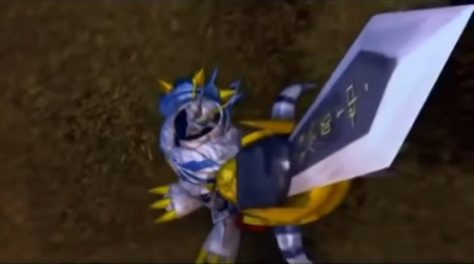
We eventually learn that Dorumon is an experimental creature created by Yggdrasil, and after changing to a more powerful and even fuzzier winged form (after witnessing more pointless death and shouting to the sky, naturally), he is abducted by another one of the Royal Knights and used to create a cloned army of mindless zombie cyborg dragons, which are unleashed upon the world like a plague to exterminate every last Digimon in existence. Dorumon spends several minutes unconscious while the X Digimon, the reformed Royal Knights, and a group of escaping rebel monsters battle the endless hordes, and when he does regain consciousness he quickly changes again—into a near-exact replica of the monsters his friends are fighting, leading to a brief period where he’s back to being an outsider. Eventually, though, everyone agrees that he is who he always was, and he and Omegamon team up to confront Yggdrasil and try to convince it to stop the violence for good, which goes about as well as you’d expect.
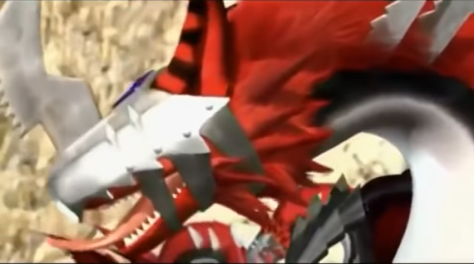
There is a lot of philosophizing about the tenacity of the Digimon (which I guess is metaphorically equivalent to human?) spirit, even in the face of an apocalyptic scenario. The will to survive is posited as a highly positive and inspiring force—and when everyone comes together, regardless of their origins (because they’re all Digimon on the inside, you see), it’s something even more powerful and beautiful. As long as someone is left, no one can say that their sacrifices were in vain (and there are a lot of self-sacrificing in this movie—although in some cases, there aren’t even any lasting consequences, because they turn up alive later.) It’s even suggested that Yggdrasil itself—which, as I said, is basically treated like God in this universe (especially given the religious faith the Royal Knights have in its plans, something that becomes especially obvious when we learn that none of them has ever actually seen it)—was only acting out of fear and desperation, as the computer world was becoming something more complex and out of its control. Given that this is a movie starring all monsters, having its central idea being something that straddles the line between naturalistic observation and human philosophy feels appropriate. On the other hand, this is still a cartoon toy tie-in aimed at kids, and it still feels patently ridiculous that they expect us to take these things that seriously, and those attempts at meaningful discussion (and kinda repetitive action scenes) near the end of the film slow it down a bit too much.
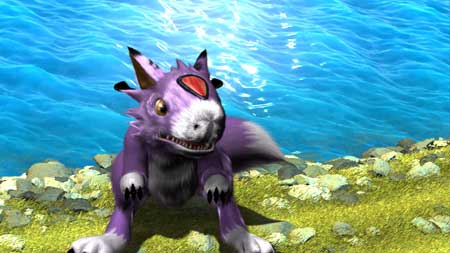
Even so, this still ends up a memorably strange mix of incongruous elements, which is almost as good as successfully employing any of them. Let’s remember: it’s a toy tie-in starring a furry purple dinosaur (among other wacky creature designs) animated in slightly-better-than-PS1-cutscene CG, with a decidedly grim tone and a shocking amount of bloodless death, a backstory that is only partially explained, and also is trying to make a point about perseverance and community. It does all this in a way that feels very earnest in its storytelling ambitions, and while its excesses and sillier elements and the rather obviously mercenary impetus for its existence (even if the content is not so blatantly cynical) makes sure it can never be taken as some grand piece of art, the fact that it tries to have something at all to say is impressive enough for me. I don’t know what inspired them to take X-Evolution in the direction they did, but I give to give them credit for the attempt.
